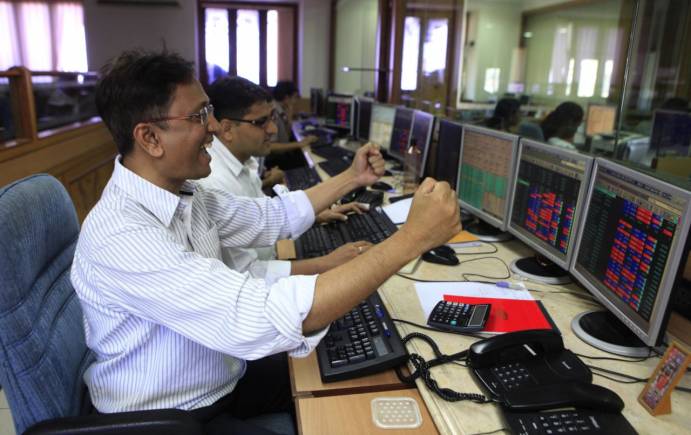Sectors that are likely to gain traction in FY19 include IT, consumption-focused sectors, high-quality infrastructure, and construction companies and Pharma.
Based on the current market conditions and fundamentals, sectors that are likely to gain traction in FY19 include IT, consumption-focused sectors, high-quality infrastructure, and construction companies and pharma, Sanjay Kumar, CIO, PNB MetLife said in an exclusive interview with Moneycontrol’s Kshitij Anand.
Q) FY19 started on a strong note after 10-11% rally seen in the last fiscal. Do you think the momentum is likely to continue?
A) The equity market has been in a consolidation mode over the last couple of months, influenced by global as well as domestic cues. The Nifty declined by 4 percent so far in the year 2018, broadly in-line with the emerging market pack.
Amid lingering domestic and global uncertainty, we expect markets to remain rangebound in the near term. There are global headwinds in the form of monetary policy normalisation by global central banks (particularly US Fed), increasing fears of a global trade war and consequent risk-off sentiment triggering potential foreign capital outflows.
On the positive side, corporate earnings are expected to revive meaningfully after muted performance over the last few years, thereby providing downside support.
Potentially, higher provisioning requirement and asset quality concerns of corporate-focused banks remain a key downside risk.
Q) Do you have any specific target for Sensex or Nifty in FY19?
A) Performance of corporate earnings, domestic political developments, the effective resolution of non-performing assets (NPAs) in case of corporate banks and movement in bond yields are likely to be the key drivers for Indian equity markets in FY19.
On the global front, the pace of monetary tightening by US Fed and global trade fears are likely to have a bearing on foreign capital flows into emerging markets including India. Amid these global and domestic concerns, FY19 is likely to be a difficult year for equity markets.
Q) Sectors which are likely to hog the limelight in FY19?
A) Based on the current market conditions and fundamentals, sectors that are likely to gain traction in FY19 include IT, consumption-focused sectors, high-quality infrastructure and construction companies and Pharma.
Technology:
IT sector provides a good risk-reward opportunity amid fairly attractive valuations. From a fundamental perspective also, global IT demand is expected to pick up amid improving global growth, as also signalled by positive management commentaries.
Consumption:
Consumption-focused sectors viz. consumer discretionary, staples, automobiles and durable financing companies are expected to do well amid expectations of a pick-up in urban as well as rural consumption.
Infrastructure:
Government’s strong focus on high priority areas such as affordable housing, roads, railways, water as well as urban infrastructure is likely to continue to benefit good quality infrastructure and construction companies.
Pharma:
Select pharmaceutical stocks, where product approvals are coming through and US FDA related issues are in the process of getting resolved, also offer value at these levels.
On the negative side, lingering asset quality concerns may continue to keep banking sector under pressure in FY19. Metals sector is also likely to get impacted amid global trade concerns.
Q) What are your vies on small & midcaps which outperformed benchmarks in FY19?
A) In the wake of domestic and political uncertainty, mid and small-cap indices are unlikely to generate the kind of returns they did in FY18.
Having said that, there are pockets within these segments where there is robust earnings growth, strong business model, increase in market share amid a shift from unorganized to organized segments and attractive valuations.
These specific companies are likely to generate superior returns in FY19. As such, a bottom-up approach is an appropriate strategy to play the mid and small-cap space in FY19.
Q) There is a big hue and cry about crude. Do you think that the black gold could trade above $75-80/bbl?
A) The recent surge in crude prices has been largely on account of geopolitical tensions and decline in US inventories, thereby indicating strong underlying demand.
If supply restrictions are imposed on Iran, the oil supply may tighten, thereby leading to further hardening of oil prices. However, higher prices may bring about a supply response, thereby providing an upside cap.
Q) What should be the portfolio composition of investors in the coming financial year assuming he is in the age bracket of 35-40 years?
A) The portfolio composition, to a large extent, depends on risk appetite and return expectations of investors. While equities generate superior risk-adjusted returns in the long-term, debt provides relatively stable returns.
As such, the portfolio composition should be a fair blend of equity and debt based on short-term and long-term goals as well as the risk profile of the investor. Given equity is inherently a volatile asset category, we recommend a systematic and long-term approach while making an investment in equities.
Q) Do you think earnings are likely to bounce back in double digits in FY19?
A) We expect corporate earnings to register growth in mid-teen in FY19 – a significant improvement from the trend seen over last few years. This is largely on account of easing of GST-led disruptions, pick-up in urban as well as rural consumption and continued government spending in infrastructure.
Moreover, favourable base is also likely to provide support to corporate earnings. The key downside risks include higher provisioning requirement in corporate-focused banks and worsening global trade restrictions.
Q) How will fears of trade wars likely to play out for Indian markets in FY19? Which sectors are likely to see the worst of it?
A) India’s exports account for a very low share of the global supply chain. As such, the impact on India from trade restrictions is expected to be minimal. However, global economic growth may adversely get impacted if this escalates.
This may lead to the global risk-off environment, thereby hurt Indian markets, given that valuations are still at a premium to the long-term average. The sectors that are likely to get include Metals, IT services, Pharma and select Auto companies and Auto Ancillaries.


